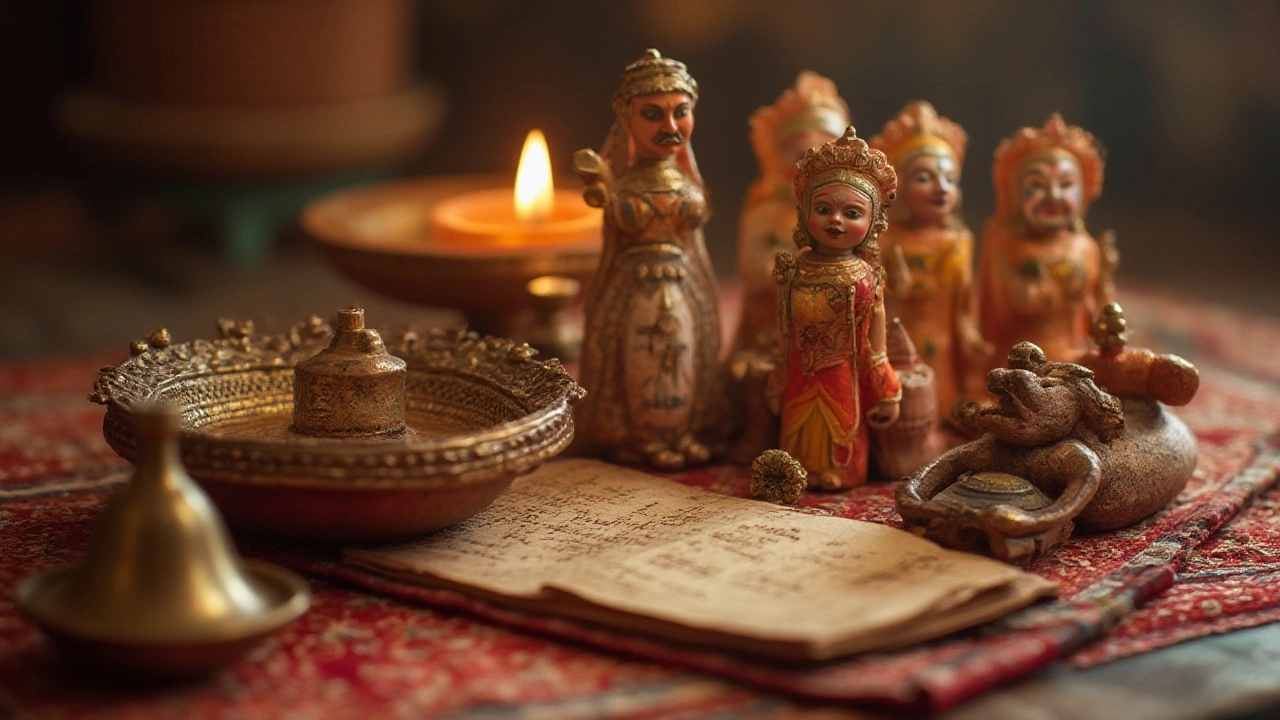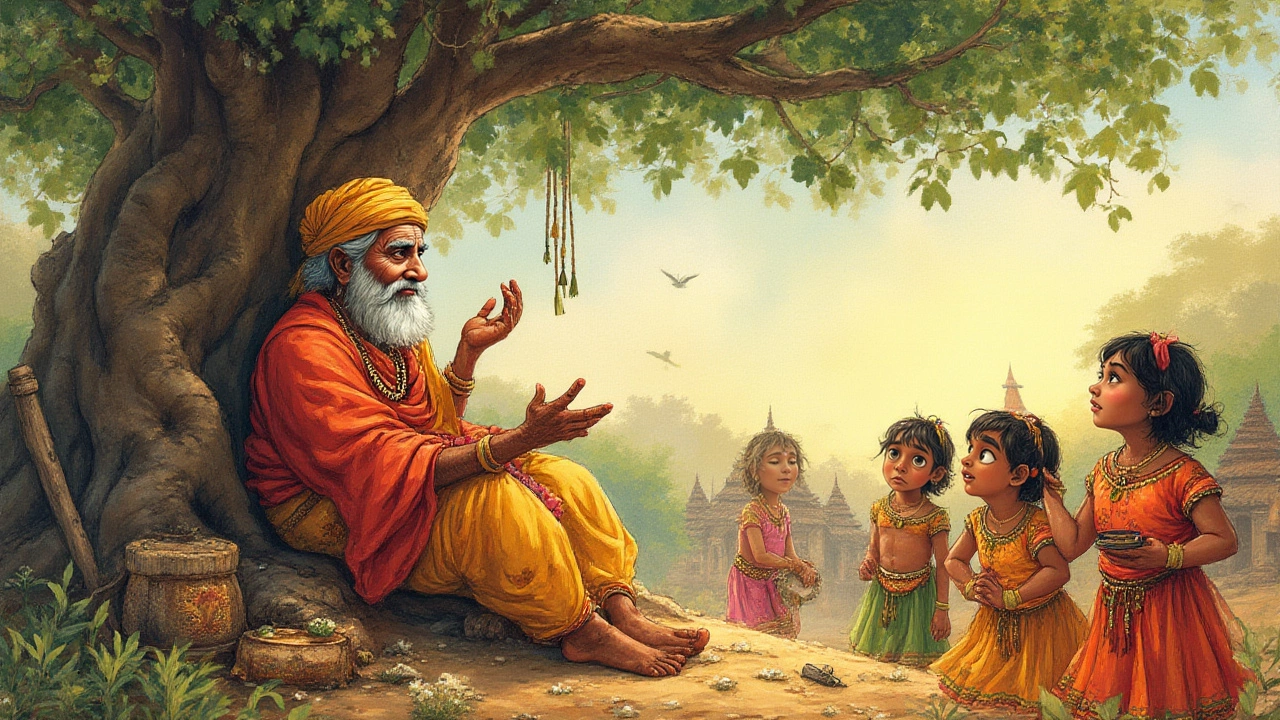Forget what you know about bedtime stories. Cultural stories have a different job to do—they bind families, explain the world, teach lessons, and sometimes even scare kids into behaving. Picture this: in Australia, gatherings around the fire aren’t just for roasting marshmallows. They're a time to pass down epic yarns older than the city of Sydney itself, carrying secrets, warnings, and wisdom. Cultural stories slip into daily life almost unnoticed, shaping what we eat, who we love, and what we fear—even in a high-rise suburb or an outback town. So, what does a true cultural story look like, and what makes one stick for generations? Let’s dig into the roots of what keeps cultures alive—not through textbooks but in stories people whisper or shout.
What Makes a Story "Cultural"?
If you grew up hearing the same story every year at a festival, holiday, or family dinner, chances are, you've got yourself a cultural story. These aren’t just tales told for laughs. They have jobs to do: explaining why things are the way they are, handing down morals, building identity, or just making sense of the strange world humans have always lived in. Every culture features its own flavor, but you’ll spot common threads. For example, Indigenous Australians use the Dreamtime stories. These powerful tales weave together how lands and animals came into existence, how people should behave, and even why certain birds squawk at sunrise.
Let’s get concrete: the story of Tiddalik the Frog is a well-known Dreamtime tale. In this yarn, Tiddalik drinks all the water, leaving the land parched. The animals must work together to make him laugh—so he spurts the water back out. It's not just a fun story; it explains why droughts happen, why sharing is essential, and why animals might need to cooperate when times are tough. Tiddalik's story packs lessons into a narrative you can pass on to a five-year-old or debate in a university seminar.
Cultural stories usually get handed down orally, but they also exist as folk songs, dances, or even tattoos. The Grimm Brothers didn’t invent fairy tales—they just wrote down what German villagers were already sharing. Same thing for West African griots (storytellers), Māori haka chants, or even the rambunctious stories in Roman Catholic saints’ lives. The power sits in how the story echoes through generations, tweaking just enough to fit new times, but staying true to its original spark. Whether it’s the tale of the Rainbow Serpent in Australia or the trickster Coyote from Native American folklore, certain stories just refuse to die because they carry something too important to be forgotten.
In fact, the World Oral Literature Project at Cambridge once estimated that “one language is lost every two weeks,” which means the stories spoken in those tongues often vanish too. That’s how valuable these stories are: they’re woven so tightly into culture that losing them can feel like losing a piece of identity itself. You’ll even notice that some modern movies or books borrow the bare bones of these tales—think about how ‘The Lion King’ borrows from African legends or Disney’s Moana pulls details from Polynesian mythology.
If you want to really check whether you’ve got a cultural story, ask yourself: does it explain how something came to be (like a mountain, river, star, or animal)? Does it teach a lesson about living with others? Does it come out when families gather, community events unfold, or new generations need a reminder of where they come from? If so, you’re probably holding a cultural story, not just another random anecdote.
| Region | Theme | Example |
|---|---|---|
| Australia | Creation, morality, nature | Dreamtime tales like Tiddalik the Frog |
| West Africa | Trickster figures, wisdom | Anansi the Spider |
| Europe | Good vs evil, superstition | Hansel and Gretel |
| Native America | Survival, respect for animals | Coyote stories |
| Mesoamerica | Origins of maize, astronomy | Popol Vuh |
An Iconic Example: The Dreamtime Tales of Indigenous Australia
Dreamtime stories hit different. Here in Australia, they’re not tucked away in history books—they’re alive in art, music, and the land itself. Say you’re driving through the Outback, and you spot a snake-like ridge winding across the red earth. That might be the body of the Rainbow Serpent, or so Dreamtime stories say. The Rainbow Serpent isn’t just a character; it’s more like a living idea. According to many Indigenous nations, she carved rivers and mountains, shaping the very landscape and setting down rules for how people must live in harmony with the land.
Imagine growing up hearing that every rock and hill has a spirit. Think about what that does to how you treat nature—suddenly, it isn’t just scenery. There are consequences if you take too much or act too carelessly. The stories themselves are different, depending on the region and language group. Some say the Rainbow Serpent is male, some say female, some say both. But they all use her as a symbol for creation and life, and sometimes destruction. It might sound mysterious, but in reality, it’s practical: by making landforms sacred, the stories protect the ecosystem long before people heard about climate change.
Other Dreamtime epics dive into complex relationships: The story of how the sun and the moon chase each other across the sky is a vivid explanation for day and night—no textbook can beat that kind of imagery. Or look at ‘The Seven Sisters’, a saga that links people to the glitter of the Pleiades star cluster overhead. It’s not random—these tales help with navigation, explain animal migrations, predict seasonal changes, and hold clues to finding waterholes far from town. Early European explorers actually relied on Indigenous guides who knew these stories, decoding the map etched into both land and sky.
Fast forward to 21st-century Sydney, and you’ll still see Dreamtime art in galleries, on metro trains, even in public murals. There are festivals where younger generations perform ancient dances while uncles, aunties, and elders share stories. It’s not rare for schools to invite Indigenous storytellers to teach Dreamtime tales, building respect and connection even in urban settings. Recently, research from Australian National University pointed out that students who learn cultural stories show higher empathy and curiosity about their own (and others’) traditions.
Dreamtime stories also come with subtle warnings. They set boundaries. For example, if there’s a story telling kids to avoid a deep billabong because a monster lives there, chances are, it’s a clever way to keep little ones safe from crocodiles. You see this “story as safety net” trick around the world: folktales about wolves in forests, banshees by cliffs, or trolls under bridges. Indigenous stories are still told today because they’ve proven useful—they’re a toolkit for survival wrapped up as entertainment.
- Dreamtime stories help younger generations understand and respect the land.
- Many stories travel through song, dance, painting, and even digital media now.
- Some Dreamtime stories are only told by elders or at special times or ceremonies, showing how sacred they are considered.
It would be wild to think these tales are just “old myths”. They shift, adapt, and survive, traveling from smoking ceremonies in the bush to TikTok videos in Bondi. The Rainbow Serpent still slithers on—sometimes on canvas, sometimes in a classroom.

How to Spot and Share Cultural Stories Today
So, say you’re curious about tracking down a cultural story in your own life—or making sure you’re passing the right ones to your kids or friends. Where do you begin? For starters, listen. Look for stories people save for special occasions. Maybe it’s a grandparent’s yarn about arriving in Australia after the war, or a cook’s funny tale about why everyone eats certain foods at Christmas. If you’re part of a community that performs dances or sings songs on public holidays, chances are, each has a story at its heart. Don’t dismiss urban legends, either. Even if a story’s details seem exaggerated, the message usually matters. Why do we tell teens not to swim at night or hang out near abandoned train stations? Sometimes there’s a real lesson hiding behind the spooky details.
If you want to keep a story alive, get the details right, but make it your own. Families have different versions—even Dreamtime tales change from clan to clan. Don’t stress about memorizing it word for word; instead, focus on the life lessons or emotional punch. And if you’re sharing someone else’s cultural story, show respect. Give credit where it’s due, honor any private or sacred details, and—if possible—ask permission before passing it on outside the community.
Storytelling is changing. Digital tools let communities share stories far and wide, from podcasts to animated videos. According to the National Library of Australia, digital archives of oral histories have “doubled in size” over the past five years. Elders now record their tales or stories in video, keeping language and meaning alive even as younger generations move to the city or overseas. And in places like Sydney, cultural festivals are finding new fans among people who just moved from halfway around the world or grew up hearing a mashup of stories from multiple backgrounds.
Here are a few tips if you want to spot or tell a strong cultural story:
- Ask family members for stories tied to holidays or big communal events.
- Notice what stories are repeated during rituals, ceremonies, or community celebrations.
- Look for tales that explain origins (why this mountain is sacred, why this flower grows here, etc.).
- Be on the lookout for stories that hand down life skills or protect the group from harm.
- If you’re learning a story from a culture not your own, take time to learn about the context and meaning before retelling it.
Ever wondered why your parents insist on certain house rules, or why your neighborhood throws a festival for a weird local event? The odds are, there’s a cultural story somewhere behind it all. These stories are handrails for life, shaping choices even when nobody’s thinking about the past. They matter more than you think. People might forget dates and laws, but a good story—that sticks.
If you’re still wondering what a strong cultural story example looks like, just picture anyone, anywhere, telling a story with a glint in their eye—one that reaches back through generations, roots you in something bigger, and makes the world make a bit more sense. That’s how you know you’ve found one worth keeping—and worth telling again.

